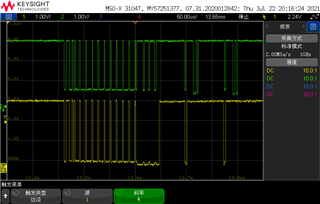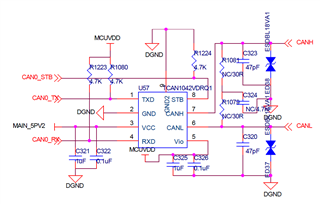Hi Expert,
We are using TCAN1042V. It is found sometime/occasionally the RX signal is not following TX signal, that caused system communication error.
Below is waveform and schematic, when changing to TJA1042TK/3, there is no this issue.
Could you help see this issue and give some suggestions? Thank you!


- Rocky

